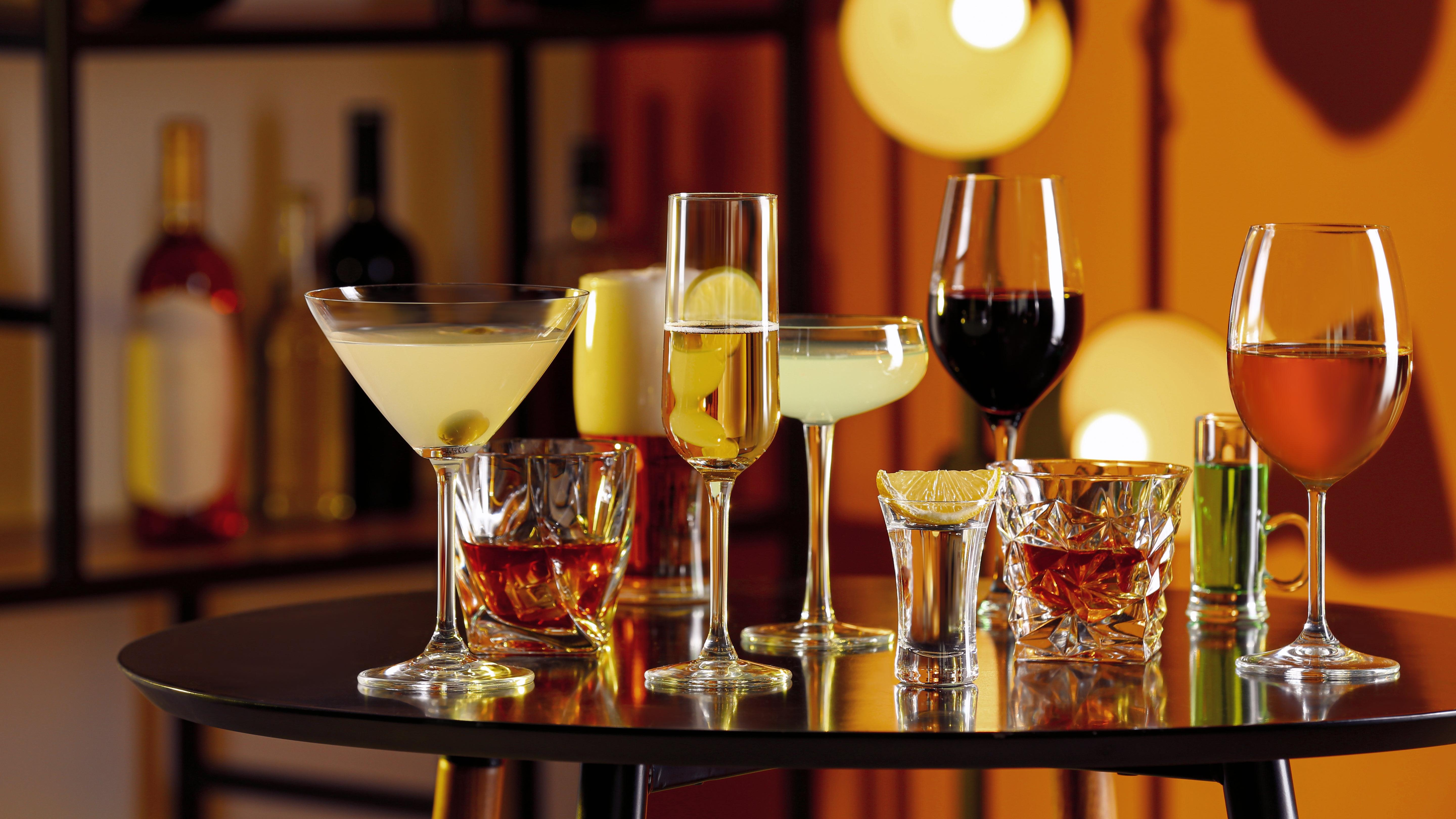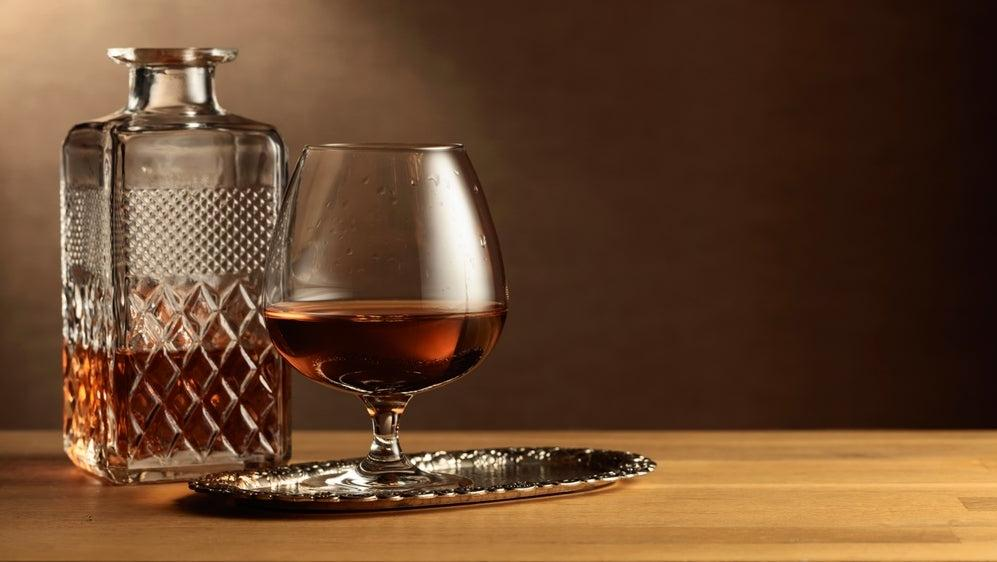Why The Shape Of Your Cocktail Glass Matters
The curvature of your glass does more for your sips than you think.
Have you ever taken a sip from a martini glass as cautiously as you could, only to end up spilling everywhere and wondering why the mouth of the glass is so wide open in the first place? No? Just me? Okay, well if you're at least curious about why some drinks come in certain glasses (and why your friend keeps spilling their martini), I've got some answers.

Martini glasses
For a period of time the martini glass screamed "classy," and nowadays it tends to scream "espresso." Either way the martini glass is easily recognizable, with its V-shaped silhouette and long stem. Funny enough, the martini glass wasn't even used for martinis at first, notes Punch. In the 1920s, the glass was more often used for champagne.
The key to this glass and its utility is its conical shape. The open mouth allows for the aroma and flavors to open up to you as you drink, while the angled edges keep the ingredients from separating. Also, the long stem helps with temperature control so your body heat coming off your hand doesn't warm up the drink too quickly.
However, there's also some lore that the wide open mouth of the glass was designed that way because it made it easier to down a cocktail and dispose of it during the Prohibition era.
Photo: VDB Photos (Shutterstock)Moscow Mule copper mugs
A Moscow Mule is most often served in a copper mug. Advanced Mixology notes that copper is the most conductive metal, which makes it perfect for a drink that relies on temperature. "The minute the ice-cold drink hits the copper, the metal cools down, and the temperature is conducted throughout the mug to the handle, creating a sensory experience," Mixology explains.
However, I spoke with Lily Wang, owner of Chicago's Nine Bar, and she called the use of copper mugs for Moscow Mules a gimmick. She has a point.
The Copper Development Association tells the history of how copper mugs came to be the go-to vessel for Moscow Mules. In the 1930s, John Martin purchased the Smirnoff vodka company, but was having trouble marketing the spirit since many people had not yet heard of vodka. Martin's friend, Jack Morgan, was having a similar issue selling his ginger beer, and a mystery woman (whose identity no one seems to agree on) was having a problem selling her copper mugs. Cue a marketing brainstorm that resulted in the "Smirnoff Mule" becoming extremely popular.
With this history in mind, Wang says a Moscow Mule actually doesn't have to be served in the copper mug, and some bars don't even carry the mugs. It's really just about personal preference.
Snifter glass
Snifter glasses are mainly used for serving dark liquors like brandy, whiskey, or cognac. The glass itself is short-stemmed, rounded, and becomes more narrow at the mouth. As the name suggests, a snifter glass is all about the smells..
"The curvature of the glass and the way it fits around your nose helps the aromas go toward your nose," Wang explains.
Taking in a whiff of whiskey straight to the nostrils is not for everybody. Some criticize the design, noting that it can "over-enhance" the alcohol to the nose, overwhelming your senses. Maximilian Riedel, president/CEO of Austrian glassware manufacturer Riedel Crystal, told Wine Enthusiast in 2018, "A snifter is definitely the worst vessel, not only for Cognac, but for all other beverages."
Although you're absolutely welcome to drink your martinis out of a mug and your whiskey out of a champagne glass, each of these pieces of drinkware has a purpose: to enhance the drinking experience based on your spirit of choice. So, while they might not all be the easiest to sip from (looking at you, martini), at least you know there's some serious thought put behind each design.

